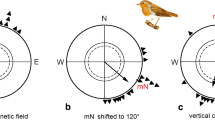Abstract.
An adaptive estimator model of human spatial orientation is presented. The adaptive model dynamically weights sensory error signals. More specific, the model weights the difference between expected and actual sensory signals as a function of environmental conditions. The model does not require any changes in model parameters. Differences with existing models of spatial orientation are that: (1) environmental conditions are not specified but estimated, (2) the sensor noise characteristics are the only parameters supplied by the model designer, (3) history-dependent effects and mental resources can be modelled, and (4) vestibular thresholds are not included in the model; instead vestibular-related threshold effects are predicted by the model. The model was applied to human stance control and evaluated with results of a visually induced sway experiment. From these experiments it is known that the amplitude of visually induced sway reaches a saturation level as the stimulus level increases. This saturation level is higher when the support base is sway referenced. For subjects experiencing vestibular loss, these saturation effects do not occur. Unknown sensory noise characteristics were found by matching model predictions with these experimental results. Using only five model parameters, far more than five data points were successfully predicted. Model predictions showed that both the saturation levels are vestibular related since removal of the vestibular organs in the model removed the saturation effects, as was also shown in the experiments. It seems that the nature of these vestibular-related threshold effects is not physical, since in the model no threshold is included. The model results suggest that vestibular-related thresholds are the result of the processing of noisy sensory and motor output signals. Model analysis suggests that, especially for slow and small movements, the environment postural orientation can not be estimated optimally, which causes sensory illusions. The model also confirms the experimental finding that postural orientation is history dependent and can be shaped by instruction or mental knowledge. In addition the model predicts that: (1) vestibular-loss patients cannot handle sensory conflicting situations and will fall down, (2) during sinusoidal support-base translations vestibular function is needed to prevent falling, (3) loss of somatosensory information from the feet results in larger postural sway for sinusoidal support-base translations, and (4) loss of vestibular function results in falling for large support-base rotations with the eyes closed. These predictions are in agreement with experimental results.
Similar content being viewed by others
Author information
Authors and Affiliations
Additional information
Received: 12 November 1999 / Accepted in revised form: 30 June 2000
Rights and permissions
About this article
Cite this article
van der Kooij, H., Jacobs, R., Koopman, B. et al. An adaptive model of sensory integration in a dynamic environment applied to human stance control. Biol Cybern 84, 103–115 (2001). https://doi.org/10.1007/s004220000196
Issue Date:
DOI: https://doi.org/10.1007/s004220000196




